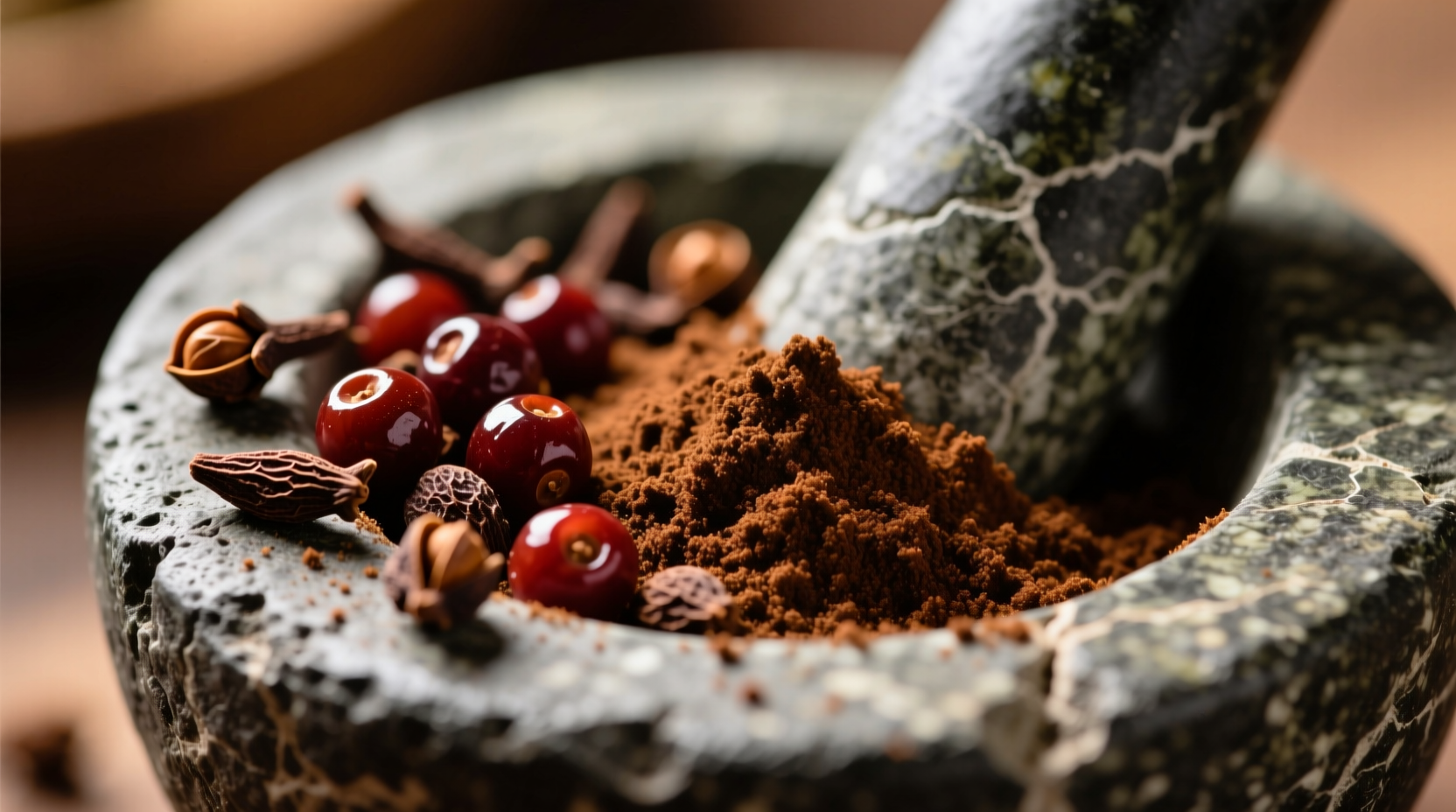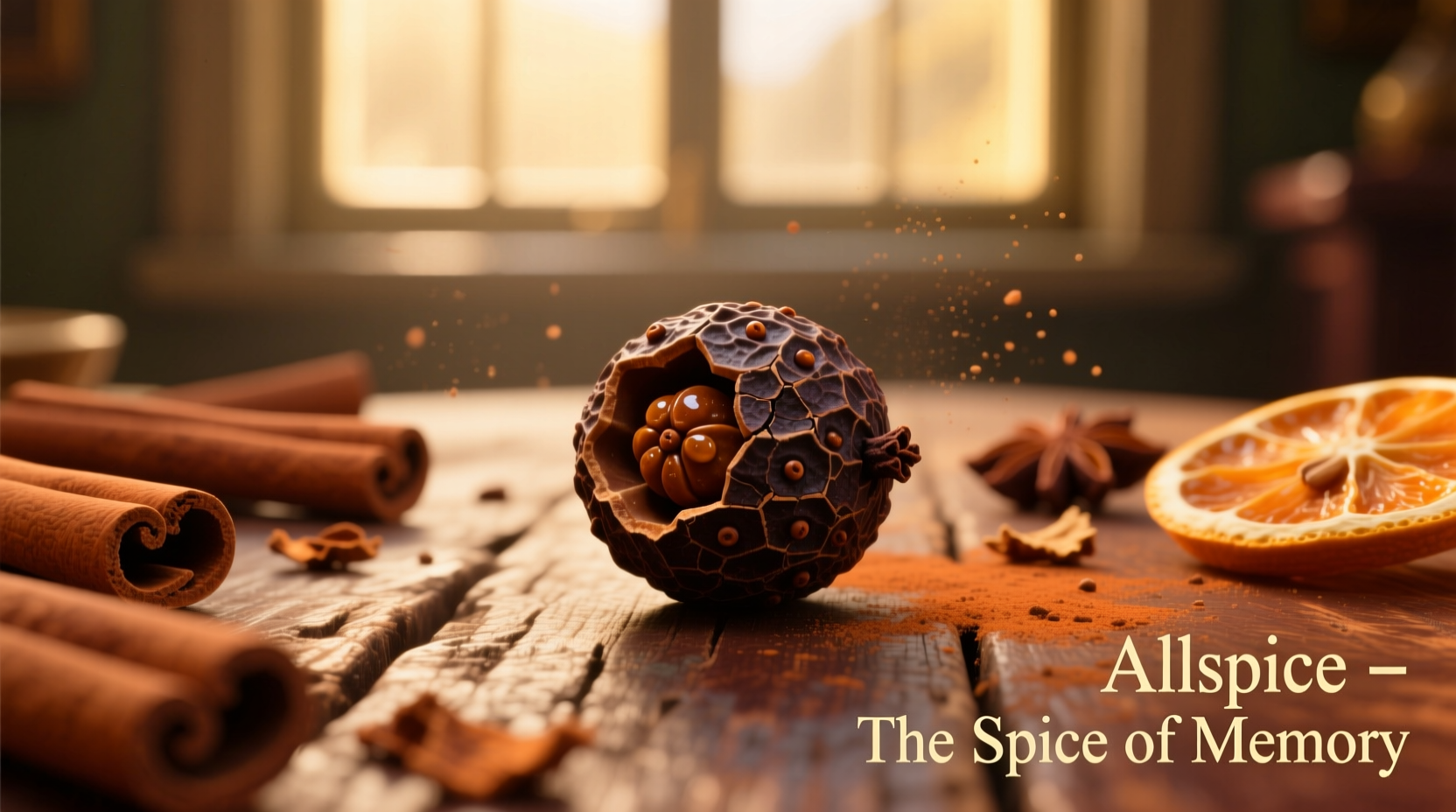Why Everyone Thinks Allspice Is a Blend (And Why They're Wrong)
When home cooks encounter "allspice" in recipes, the name triggers an immediate assumption: this must be a pre-mixed combination of common spices. This misconception persists because allspice delivers complex flavor notes that mirror a blend. The reality? Allspice is 100% pure Pimenta dioica berry, with no additional ingredients.
Christopher Columbus originally mistook these berries for black peppercorns, calling them "pimienta." Later, 17th-century English explorers noted how the flavor resembled multiple spices, coining the term "allspice"—a name that's caused confusion ever since. This historical mix-up explains why so many modern cooks still believe they're using a spice blend.
The Science Behind Allspice's Complex Flavor Profile
What makes one humble berry taste like three distinct spices? The answer lies in its chemical composition. Allspice contains key compounds found individually in other spices:
| Flavor Compound | Primary Spice Source | Concentration in Allspice |
|---|---|---|
| Eugenol | Cloves (70-90%) | 4-12% (creates clove-like warmth) |
| Caryophyllene | Nutmeg (20-25%) | 10-16% (provides peppery depth) |
| Ethyl Cinnamate | Cinnamon (5-10%) | 1-3% (adds sweet, woody notes) |
This natural chemical synergy creates the illusion of multiple spices. When properly stored and used fresh, whole allspice berries release these compounds gradually during cooking, producing layered flavors that mimic a blend without actual mixing.
How Allspice Evolved From Misunderstood Berry to Global Staple
Understanding what's in allspice requires examining its historical journey:
- Pre-1500s: Indigenous Taíno people in Jamaica used dried Pimenta berries for food preservation and medicinal purposes
- 1494: Columbus collects "peppercorns" in the Caribbean, mistakenly identifying them as black pepper
- 16th century: Spanish colonists adopt allspice for curing meats and preserving fish during long voyages
- 1621: English botanist John Parkinson documents the spice's "savorie smell" resembling "clove, nutmeg, and cinnamon"
- 18th century: Allspice becomes essential in Jamaican jerk seasoning and European pickling recipes
- Today: Recognized globally as both a standalone spice and critical component in blends like baharat and quatre épices
Where Allspice Shines (And Where It Doesn't)
Knowing what's in allspice helps determine optimal usage. This spice excels in specific applications while failing in others:
Perfect Applications for Allspice
- Slow-cooked dishes: Stews, braises, and bean dishes where flavors have time to meld (try ½ tsp per 4 servings)
- Pickling solutions: Adds complexity to vinegar-based preserves (use whole berries for easy removal)
- Marinades for dark meats: Complements poultry, game, and pork with its warm notes
- Baking: Essential in gingerbread, pumpkin pie, and Caribbean fruitcakes
Situations Where Allspice Falls Short
- Delicate fish or vegetable dishes: Overpowers subtle flavors
- Quick-cooking applications: Needs time to release flavors—avoid in last-minute seasoning
- When specific spice notes are required: Use actual cinnamon for pure cinnamon flavor
Maximizing Flavor: Whole Berries vs. Ground Allspice
The form you choose dramatically impacts what's in allspice regarding flavor intensity and shelf life:
Whole berries maintain peak flavor for 2-4 years when stored properly. Toasting them lightly in a dry pan before use releases volatile oils that ground allspice has already lost. This method delivers the most complex flavor profile, making it ideal for pickling and slow-cooked dishes.
Ground allspice loses 50% of its volatile compounds within 6 months. While convenient, it provides a flatter flavor profile. Use ground allspice only when recipe instructions specifically call for it, and replace your container every 6 months for best results.

Smart Substitutions When You're Out of Allspice
When you need to understand what's in allspice for substitution purposes, remember this ratio creates the closest approximation:
- ½ tsp cinnamon
- ¼ tsp ground cloves
- ¼ tsp nutmeg
This blend mimics allspice's chemical profile but lacks the nuanced release of flavors from whole berries. For Jamaican recipes like jerk chicken, add a pinch of cayenne to approximate traditional heat levels. Never substitute pre-made pumpkin pie spice—it contains additional spices like ginger that alter the flavor balance.
Preserving Allspice's Complex Flavor Profile
Proper storage determines how much of allspice's natural compounds remain active. Follow these evidence-based guidelines from the National Center for Home Food Preservation:
- Store whole berries in airtight glass containers away from light and heat
- Keep away from stove tops or windows where temperature fluctuates
- Never store near strong-smelling foods like onions or coffee
- Grind berries immediately before use for maximum flavor impact
- Replace ground allspice every 6 months (whole berries last 2-4 years)
Researchers at the University of Florida's Institute of Food and Agricultural Sciences confirm that light exposure degrades eugenol content by 30% within 3 months, significantly diminishing allspice's characteristic warmth.
Common Questions About Allspice Composition
Understanding what's in allspice helps resolve frequent kitchen dilemmas:
Is allspice safe for people with spice allergies? Since it's a single berry, not a blend, it avoids cross-contamination risks. However, those allergic to myrtle family plants (which includes allspice) should exercise caution.
Why does my allspice taste different from recipe descriptions? Most commercial ground allspice loses volatile compounds during processing. For authentic flavor, toast and grind your own whole berries.
Can I grow my own allspice? Pimenta dioica trees require tropical conditions (zones 10-11) and take 7-10 years to produce berries. Most home growers find it more practical to source quality whole berries.











 浙公网安备
33010002000092号
浙公网安备
33010002000092号 浙B2-20120091-4
浙B2-20120091-4